Tooth Removal
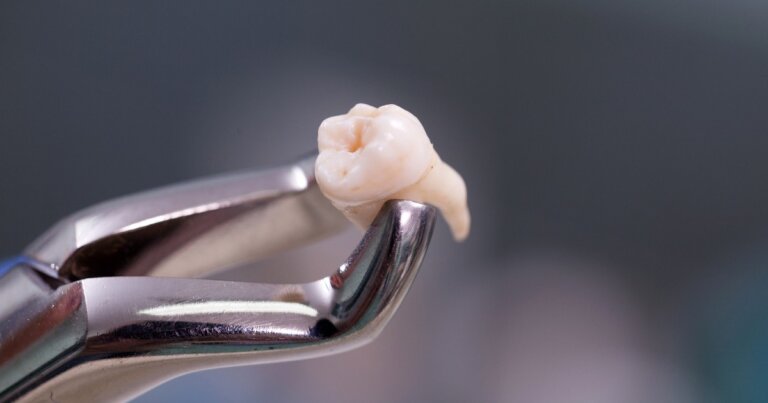
What is Tooth Removal?
Tooth removal, also known as tooth extraction or dental extraction, is a common dental procedure performed by dentists to remove a tooth from its socket in the jawbone. While dentists strive to preserve natural teeth whenever possible, there are instances where tooth removal becomes necessary for the overall health and well-being of the patient.
Tooth removal may be recommended for various reasons, including severe tooth decay, advanced periodontal disease, trauma or injury to the tooth, overcrowding, impacted wisdom teeth, or the preparation for orthodontic treatment. The procedure aims to alleviate pain, prevent further complications, and improve oral health.
While tooth removal may seem intimidating, advancements in dental techniques and anesthesia have made the procedure relatively safe and comfortable for patients. Dentists prioritize patient comfort and strive to ensure a smooth and successful extraction while considering the individual’s overall oral health.
Before you deciding on whether Tooth Removal are right for you, there are some things you should know:
- Who Needs Tooth Removal?
- What Are The Advantages Of Tooth Removal?
- What Are The Potential Risks Or Complications Of Tooth Removal?
- How Much Does Tooth Removal Cost?
- What Are The Steps In The Tooth Removal Procedure?
- Can I Have Tooth Removal If I Am Pregnant?
If you have any further questions about Tooth Removal or other dental services offered at Atlas Dental, please contact us.

Free phone consultation
Have questions about dental extraction service? Schedule a free phone consultation with our Toronto dentist.

5 star google reviews
Our patients love us! See why more and more people are choosing Atlas Dental for tooth extraction.

Emergency dental care
Have tooth pain in Toronto and need a tooth removal appointment immediately? Book online for same day dental extraction.
Who Needs Tooth Removal?
Tooth removal may be necessary for various reasons, and dentists may recommend it based on individual circumstances. Here are some common situations where tooth removal may be required:
- Severe Tooth Decay: When tooth decay reaches an advanced stage and causes significant damage to the tooth structure, it may be necessary to remove the affected tooth. Tooth decay can lead to pain, infection, and the spread of bacteria to neighboring teeth, making extraction the best course of action to prevent further complications.
- Periodontal Disease: Advanced gum disease, also known as periodontal disease, can result in the loosening of teeth and damage to the supporting tissues. In cases where the disease has progressed extensively and the teeth have become severely compromised, tooth removal may be necessary to preserve overall oral health.
- Trauma or Injury: Accidents or injuries to the teeth can cause fractures, cracks, or severe damage that cannot be repaired. In such cases, tooth removal may be recommended to prevent infection, alleviate pain, and prevent potential complications.
- Overcrowding: Some individuals may have crowded teeth, where there is insufficient space in the jaw to accommodate all the teeth properly. In orthodontic treatment planning, tooth removal may be necessary to create enough space for the remaining teeth to align properly. Typically, premolars are the most commonly removed teeth in cases of overcrowding.
- Impacted Wisdom Teeth: Wisdom teeth, also known as third molars, often do not have enough space to emerge fully or in the correct position. They can become impacted, partially erupted, or grow at an angle, causing pain, infection, and potential damage to neighboring teeth. In such cases, extracting the impacted wisdom teeth may be recommended to alleviate discomfort and prevent future problems.
- Orthodontic Treatment: In some orthodontic cases, tooth removal may be part of the treatment plan. Removing specific teeth can help create the necessary space for proper alignment and bite correction, ultimately achieving a more aesthetically pleasing and functional smile.
It is important to note that tooth removal is typically considered a last resort, and dentists will explore alternative treatments whenever possible. Dentists assess each case individually, considering factors such as oral health, the extent of damage or disease, and the potential impact on neighboring teeth before recommending tooth extraction. If you have further questions about Tooth Removal, please contact us.
What Are The Advantages Of Tooth Removal?
While tooth removal may seem like an intimidating procedure, it can provide several advantages for the overall oral health and well-being of the patient. Here are some of the benefits of tooth removal when necessary:
- Pain Relief: Tooth removal can alleviate persistent or severe tooth pain caused by advanced decay, trauma, or infection. By removing the source of pain, patients can experience immediate relief and an improved quality of life.
- Infection Prevention: When a tooth is severely decayed, infected, or damaged, there is a risk of the infection spreading to neighboring teeth or even into the bloodstream, leading to more serious health complications. Tooth removal eliminates the infected tooth, effectively preventing the spread of infection and reducing the risk of further oral and systemic health problems.
- Correction of Alignment Issues: In cases of overcrowding or misalignment, tooth removal can help create space for orthodontic treatment. By removing specific teeth, orthodontists can guide the remaining teeth into proper alignment, improving the overall appearance and functionality of the smile.
- Wisdom Teeth Complications: Wisdom teeth, often extracted due to impaction or other issues, can cause a range of problems. Removing impacted wisdom teeth can prevent pain, swelling, infections, and the potential damage to adjacent teeth. Additionally, extraction at a younger age reduces the chances of complications and facilitates faster healing.
- Preparation for Prosthetics: In cases where a patient requires dentures, dental implants, or other restorative treatments, tooth removal may be necessary to create space or ensure a stable foundation. Extracting unhealthy or damaged teeth before prosthetic placement can improve the success and longevity of the prosthetic treatment.
- Enhanced Oral Health: Tooth removal, when deemed necessary, contributes to overall oral health by eliminating diseased or damaged teeth. It can help prevent further dental issues, such as gum disease, and tooth decay, by removing a potential source of infection and restoring oral health.
It is important to note that tooth removal is typically considered a last resort, and dentists will explore conservative treatment options whenever possible. Dentists will carefully evaluate the individual’s oral health, consider the potential benefits and risks, and discuss alternative solutions before recommending tooth extraction. If you have further questions about Tooth Removal, please contact us.

What Are The Potential Risks Or Complications Of Tooth Removal?
While tooth removal is generally a safe and routine procedure, there are some potential risks and complications that patients should be aware of. These risks are relatively uncommon but can occur in certain cases. It is important to discuss these risks with your dentist before undergoing a tooth extraction. Here are some possible complications:
- Pain and Swelling: After a tooth extraction, it is normal to experience some level of pain and swelling. However, in some cases, the pain or swelling may be more severe or prolonged, indicating an infection or dry socket (a condition where the blood clot that forms in the extraction site dislodges or dissolves prematurely).
- Infection: Although dentists take precautions to minimize the risk of infection during and after the procedure, there is still a slight chance of developing an infection. Symptoms of infection may include increased pain, swelling, redness, fever, or discharge from the extraction site. Prompt treatment with antibiotics is typically effective in resolving the infection.
- Bleeding: Some bleeding is normal immediately after a tooth extraction. However, excessive or prolonged bleeding may occur, especially if the blood clot in the extraction site becomes dislodged. Patients should follow their dentist’s instructions for post-extraction care to minimize the risk of excessive bleeding.
- Nerve Damage: The extraction of certain teeth, particularly impacted wisdom teeth, carries a small risk of nerve damage. This can result in temporary or, rarely, permanent numbness or altered sensation in the lips, tongue, or chin. Dentists take precautions to minimize this risk, such as carefully assessing the tooth’s position in relation to the nerves before the extraction.
- Sinus Problems (Upper Teeth): When removing upper back teeth, there is a possibility of creating a communication between the oral cavity and the sinus cavity. This may lead to sinus infections or complications. Your dentist will take appropriate measures to minimize this risk, such as evaluating the proximity of the sinus cavity and using specific techniques during the extraction.
- Jaw Fracture (Rare): In extremely rare cases, the jawbone may fracture during a tooth extraction. This is more likely to occur in patients with weakened jawbones due to conditions like osteoporosis or as a result of trauma. Dentists use proper techniques and tools to minimize this risk, and fractures can usually be treated effectively.
It’s important to remember that complications are relatively rare, and dentists are trained to minimize risks and manage any complications that may arise. By carefully following your dentist’s instructions for post-extraction care, you can help reduce the likelihood of complications and promote proper healing. If you have further questions about Tooth Removal post-operative instructions, please contact us.
Cost of Tooth Removal
Tooth Removal cost can range from $213 to 307, and is determined by how difficult the procedure is. Simple (uncomplicated) extractions involve removal with only a pair of forceps. Complicated (surgical) extraction often requires raising the gum off the bone, and cutting into either tooth and/or bone to remove the tooth in pieces. The codes relevant to tooth removal in the Ontario Dental Association’s Suggested Fee Guide appear as follows:
- 71101 – Removals, Erupted Teeth, Uncomplicated: $213
- 71201 – Removals, Erupted Tooth, Surgical Approach, Requiring Surgical Flap and/or Sectioning of Tooth: $307
Tooth extractions are considered a basic service under all dental insurance plans and should be covered to your maximum insurable limit, but be sure to find out from your dental insurance plan provider how much you are eligible for before going ahead with dental treatment. Our fees are consistent with the ODA Fee Guide.
For patients without dental insurance, Atlas Dental is pleased to offer dental financing through Dentalcard. Affordable payment plans start at 7.95% for terms of 6 months to 6 years. To learn more about Dentalcard dental treatment financing, follow this link.
What Are The Steps In The Tooth Removal Procedure?
Tooth removal, also known as tooth extraction, typically follows a series of steps designed to ensure a safe and successful procedure. Here is an overview of the general steps involved in a tooth extraction:
- Examination and Evaluation: Please review these pre-operative instructions before your visit. Before the extraction, the dentist will perform a thorough examination of your mouth, including dental X-rays if necessary. This evaluation helps determine the type of extraction required, assesses the position and condition of the tooth, and identifies any potential complications.
- Local Anesthesia: To ensure your comfort during the procedure, the dentist will administer local anesthesia to numb the area around the tooth being extracted. This will prevent pain and discomfort during the extraction. In some cases, additional sedation options may be available for patients who experience anxiety or require more extensive procedures.
- Loosening the Tooth: Once the area is numb, the dentist will begin the extraction by gently rocking the tooth back and forth using specialized dental instruments called elevators. This loosens the tooth from its socket in the jawbone.
- Extraction: Once the tooth is sufficiently loosened, the dentist will use forceps to grasp the tooth and carefully remove it from its socket. The extraction process may involve applying controlled pressure and using specific techniques to minimize trauma to the surrounding tissues.
- Sutures (if needed): In certain cases, the dentist may need to place stitches to close the extraction site. This is more common in surgical extractions or when multiple teeth are removed. The stitches promote proper healing and may be absorbable or require a follow-up visit to remove them.
- Post-Extraction Care: After the extraction, the dentist will provide instructions for post-extraction care. This typically includes biting on a gauze pad to control bleeding, taking prescribed pain medications or over-the-counter pain relievers, applying ice packs to reduce swelling, and avoiding certain activities or foods that can disrupt the healing process.
- Follow-Up Appointment: Depending on the complexity of the extraction and your individual circumstances, the dentist may schedule a follow-up appointment to monitor the healing progress, remove stitches if necessary, and address any concerns or complications.
It’s essential to communicate openly with your dentist throughout the procedure, providing information about your medical history, current medications, and any concerns or questions you may have. This will help ensure a safe and successful tooth removal experience. If you have further questions about the Tooth Removal procedure, please contact us.
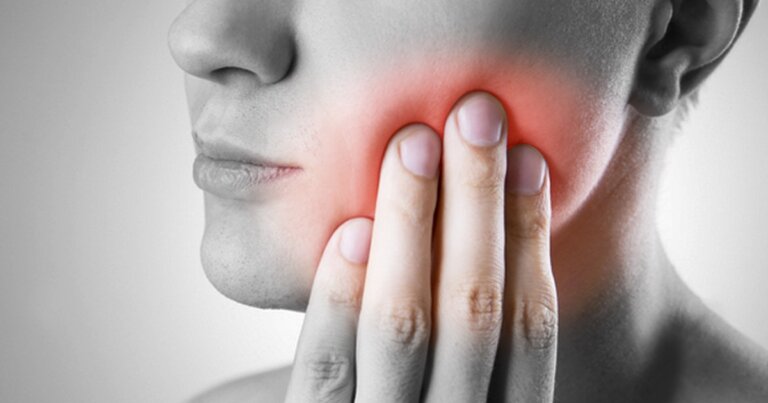
Can I Have Tooth Removal If I Am Pregnant?
Tooth removal during pregnancy is generally approached with caution, and the decision depends on several factors. It is important to consult with both your dentist and obstetrician to evaluate the potential risks and benefits specific to your situation. Here are some considerations regarding tooth removal during pregnancy:
- Timing: The timing of the tooth removal is a crucial factor. The second trimester is generally considered the safest time for dental procedures, including tooth extractions. At this stage, the risk to the developing fetus is lower compared to the first and third trimesters.
- Urgency and Severity: The urgency and severity of the dental condition will influence the decision. If the tooth removal is necessary to address a severe infection, alleviate significant pain, or prevent potential harm to your overall health, it may be recommended even during pregnancy.
- Anesthesia and Medications: The choice of anesthesia and medications used during the tooth removal procedure will be carefully considered. Local anesthesia is generally considered safe during pregnancy, but other forms of sedation or general anesthesia may be avoided or used with caution. Your dentist will consult with your obstetrician to determine the safest options.
- Radiation Safety: Dental X-rays are typically avoided during pregnancy unless absolutely necessary. If X-rays are required, your dentist will take precautions to minimize radiation exposure, such as using lead aprons and thyroid collars to shield the abdomen and neck.
- Post-Extraction Care: After the tooth removal, your dentist will provide instructions for post-extraction care. It’s important to follow these guidelines diligently to promote healing and minimize the risk of complications.
Ultimately, the decision to undergo tooth removal during pregnancy depends on balancing the potential risks to the mother and the developing fetus with the necessity of the procedure. In some cases, it may be possible to delay the extraction until after pregnancy, particularly if the condition is not urgent or causing significant discomfort. If you have further questions about Tooth Removal during pregnancy, please contact us.
We also think you’ll like…
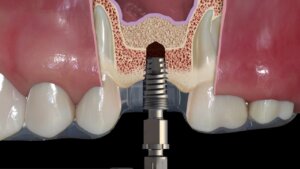
Indirect Sinus Lift
Indirect Sinus Lift What Is Indirect Sinus Lift? Indirect Sinus Lift, also known as subantral sinus augmentation, subcrestal augmentation, sinus floor elevation, or transcrestal approach,
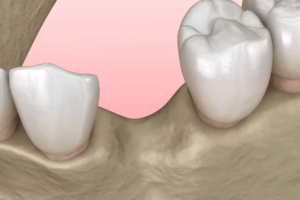
Dental Bone Loss
Dental Bone Loss What Is Dental Bone Loss? Dental bone loss, also known as periodontal bone loss or alveolar bone loss, refers to the loss
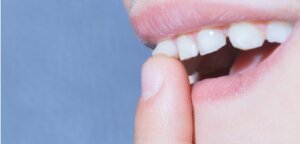
Loose Tooth
Loose Tooth What Is A Loose Tooth? A Loose Tooth is a dental problem that occurs when a tooth becomes less secure in its socket.
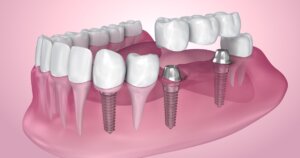
Dental Implants
Dental Implants What are Dental Implants? Dental Implants are revolutionary replacements for missing teeth that not only look and feel like natural teeth but also
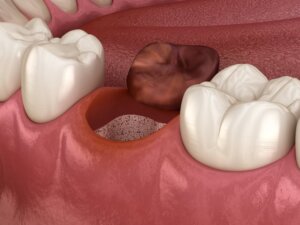
Dry Socket: Symptoms, Causes, Prevention & Treatment
Dry Socket: Symptoms, Causes, Prevention & Treatment What Is A Dry Socket? Dry socket is also called alveolar osteitis. After having regular tooth removal or

Dental Implant Bridge
Dental Implant Bridge What Is A Dental Implant Bridge? A dental implant bridge is a prosthetic device used to replace one or more missing teeth

